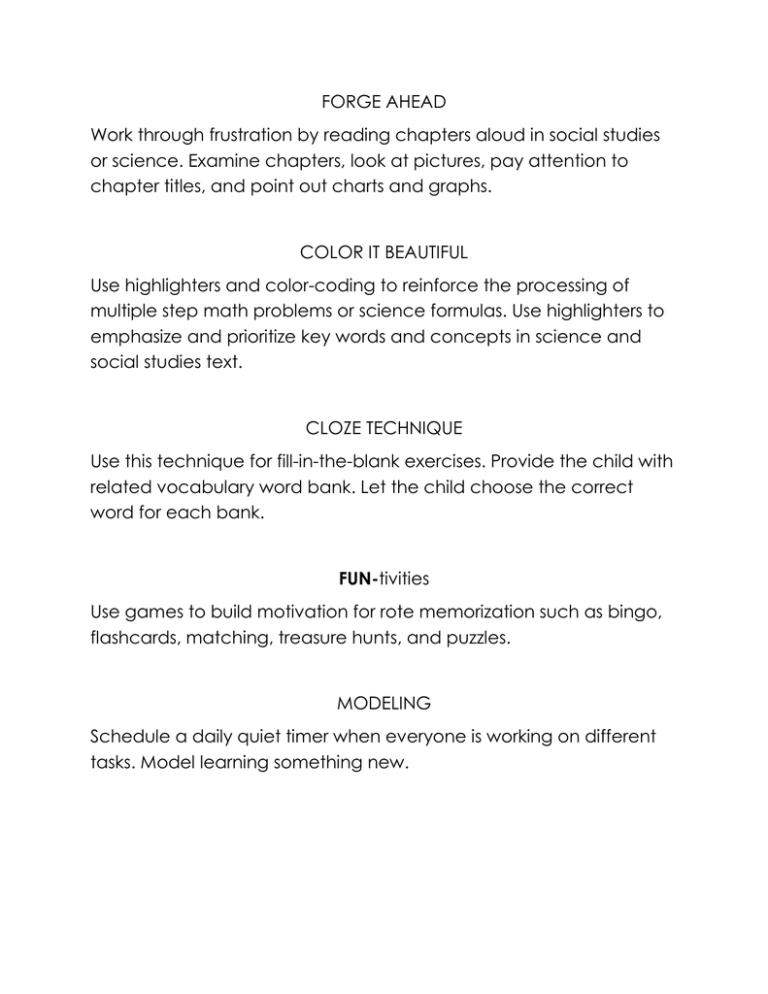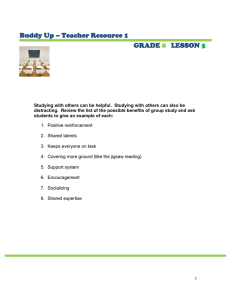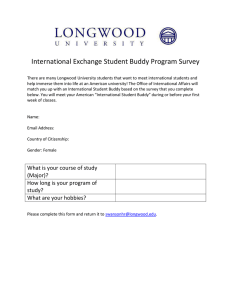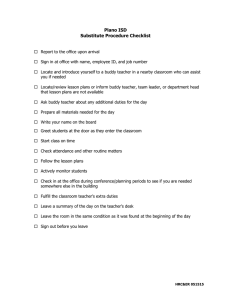FORGE AHEAD
advertisement

FORGE AHEAD Work through frustration by reading chapters aloud in social studies or science. Examine chapters, look at pictures, pay attention to chapter titles, and point out charts and graphs. COLOR IT BEAUTIFUL Use highlighters and color-coding to reinforce the processing of multiple step math problems or science formulas. Use highlighters to emphasize and prioritize key words and concepts in science and social studies text. CLOZE TECHNIQUE Use this technique for fill-in-the-blank exercises. Provide the child with related vocabulary word bank. Let the child choose the correct word for each bank. FUN-tivities Use games to build motivation for rote memorization such as bingo, flashcards, matching, treasure hunts, and puzzles. MODELING Schedule a daily quiet timer when everyone is working on different tasks. Model learning something new. FAMILY MAP Create a monthly calendar of family homework commitments. Keep this calendar visible to help prioritize other commitments and to capitalize on shared topics that siblings may be studying. TEACH ME The coach becomes the student. Provide the child with a red pen; allow them to take you step by step through the process or concept. Check for their understanding by asking questions. Allow yourself to make mistakes. Allow them to grade you on your performance. STUDY BUDDY Your child invites another child to review together. The study buddy group should not be larger than three students. These groups do require some adult supervision. They work best with prepared review questions or a study guide. The coach can use review questions to determine concepts mastered. IT’S A GAME The coach can make it fun and build challenges by developing a bar graph to chart homework. The variables charted can be homework completed or work per specific subject. GALLOPING GOURMET Create note cards that follow a recipe format in order to remember multiple step directions. BREAK THE CODE Survey chapter vocabulary with your child. Use the following technique to increase comprehension. -The child places a (1) next to words he knows; a (2) beside words he has seen before but does not remember the meaning; and a (3) next to words he does not know. Emphasize the words he knows and define the unfamiliar words. TICKET TO PARADISE Make a ticket booklet with personalized reinforcement activities. These tickets can be tailored to your child’s hobbies and interests. TRUMPETING Give verbal encouragement frequently. Advertise your child’s progress to individuals who are important to your child. EXECUTIVE STYLE Create a rolodex of new vocabulary words. -This rolodex can be kept and updated throughout the middle school years too. A PICTURE IS WORTH A THOUSAND WORDS Provide models, hands-on examples, drawings, and charts to assist in learning. Supplies that can be used include box tops, string, construction paper, etc. Remember if you can touch it and see it, it may enhance conceptualization. CARTOON STRIP Use a comic strip format to review anything that builds to a final event or product (history or science). Use this format to practice detecting inference in reading material. PROCTOR You and your child design a test based on the previous test format. Use this practice test to study either individually or with a Study Buddy group. SURF THE NET Use the internet to help your child with homework questions, project research or subject mastery through various learning activities. REINFORCEMENT Positive reinforcement can be based on the completion of a task, your child’s commitment to a project or ability to accept critical feedback. LIBRARIAN Schedule a consistent and weekly time to use the library. Explore the library’s many resources. Be sure to check-out magazines, videos, CDs, and books-on-tape.




